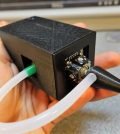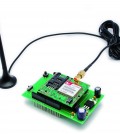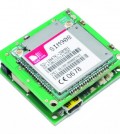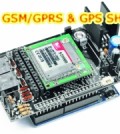- makeITcircular 2024 content launched – Part of Maker Faire Rome 2024Posted 2 weeks ago
- Application For Maker Faire Rome 2024: Deadline June 20thPosted 2 months ago
- Building a 3D Digital Clock with ArduinoPosted 7 months ago
- Creating a controller for Minecraft with realistic body movements using ArduinoPosted 7 months ago
- Snowflake with ArduinoPosted 8 months ago
- Holographic Christmas TreePosted 8 months ago
- Segstick: Build Your Own Self-Balancing Vehicle in Just 2 Days with ArduinoPosted 8 months ago
- ZSWatch: An Open-Source Smartwatch Project Based on the Zephyr Operating SystemPosted 9 months ago
- What is IoT and which devices to usePosted 9 months ago
- Maker Faire Rome Unveils Thrilling “Padel Smash Future” Pavilion for Sports EnthusiastsPosted 10 months ago
-
umlaut’s new Intelligent HMI Test System to offer higher efficiency and reduce cost
umlaut’s new Intelligent HMI Test System to offer higher efficiency and reduce cost In its latest white paper, the benchmarking and testing expert analyzes the challenges of testing, the benefits of automated test solutions to help...
- Posted 3 years ago
-
The ‘Sup: Low Cost and Open Source Mouse for Quadriplegics
At the core of any assistive technology is finding a way to do something with whatever abilities the user has available. This can be especially difficult in the case of quadriplegia sufferers, the loss of control of...
- Posted 6 years ago
-
Top 5 physiological computing platforms roundup, part 3/3
Today we are going to close the roundup, hope you enjoyed it! SpikerBoxes by Backyard Brains SpikerBoxes are thought out for standalone operation and have an integrated speaker to provide direct feedback in response to events such...
- Posted 9 years ago
-
Top 5 physiological computing platforms roundup, part 2/3
If you liked yesterday’s post, here is the second part: OpenBCI Brain activity monitoring is a daunting task no matter how one goes about it. Packing most of the features of high-end Electroencephalography (EEG) equipment in an...
- Posted 9 years ago
-
Top 5 physiological computing platforms roundup, part 1/3
Physiological computing focuses on the use of biosignals for the development of interactive software and hardware systems capable of sensing, processing, reacting, and interfacing the digital and analog worlds. However, biosignals have specific requirements for which typical...
- Posted 9 years ago















